Andalusian Rock (rock andaluz in Spanish) is a musical genre characterized by the combination of Flamenco with rock music and other elements such as Arabic influences, jazz and blues.
Pioneers
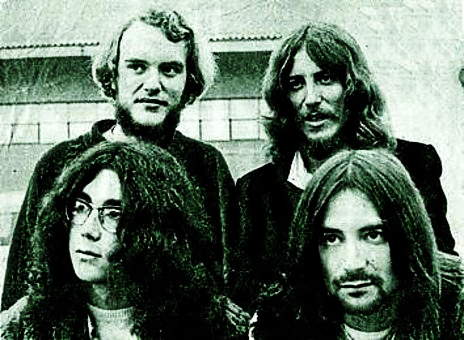
Rock andaluz was started in the late 1960s by Seville-based group Smash. This legendary psychedelic rock and blues act was formed by Gualberto Garcia in 1967 and recorded two influential albums, Glorieta de los Lotos (1970) and We Come to Smash this Time (1971).
Another seminal group was Gong, formed in Seville in 1967. Gong initially played blues-rock but it soon evolved towards progressive jazz-rock and incorporated Andalusian influences. Gong initially included Mané on guitar, Ricki on organ and piano, José Maria Ruiz on bass and Pepe Saavedra on drums. There were several line-up changes. Luis Cobo “Manglis” joined the band on guitars and Manuel Marinelli on keyboards. These last two musicians later formed two of the most important bands in the 1970s: Guadalquivir and Alameda and respectively.

Gong recorded an LP that was never released and put out two singles. They disbanded in 1971.
An early 1970s band called Green Piano is sometimes mentioned within the Andalusian rock context. However, even though they were based in Seville, the group played blues rock and progressive rock with little Andalusian or flamenco influence.
The Andalusian Progressive Music Era
Inspired by the rock music pioneers, Andalusian rock emerged in the early 1970s with groups based in Seville (Sevilla), Jerez de la Frontera (Cádiz province), Córdoba, Antequera (Málaga) and Cádiz. Due to the lack of regular music venues, musicians and young entrepreneurs found a wide range of locations to stage concerts: town squares, high school soccer fields, summer movie theaters, bull fighting rings and some municipal theaters.
Triana
The most popular Andalusian rock band by far was Triana, a trio that added Flamenco bulería beats to a progressive rock format and released several commercially successful LPs. The original line-up included Jesús de la Rosa Luque on vocals and keyboards, Eduardo Rodríguez Rodway on vocals and guitar, and Juan José Palacios “Tele” on drums and percussion.
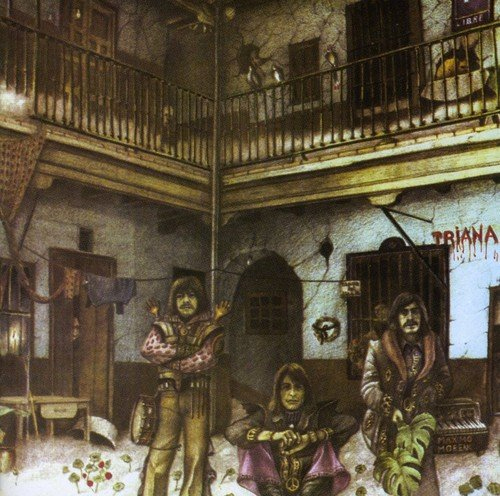
The first three Triana albums were progressive rock creations: El Patio (Fonomusic, 1975), Hijos del agobio (Fonomusic, 1977), and Sombra y luz (Fonomusic, 1979). After that, Triana became very popular and switched to a more radio friendly rock and pop crossover format. Jesús de la Rosa Luque died on October 14, 1983 in a car accident.
Iman, Califato Independiente
One of the most influential bands was Iman, Califato Independiente. The group incorporated some of the best instrumentalists from Seville and Jerez. Imán combined Andalusian music with progressive rock, Arabic melodies, fusion jazz and Latin American rhythms. The band’s founder was Manolo Rodríguez, a former Goma member. He was joined by keyboardist Dr. Marcos Mantero, who had performed with Gualberto and Germán Rodriguez-Hesles García from Gong. The band also included the multifaceted Luis Delgado, who only lasted a few months.
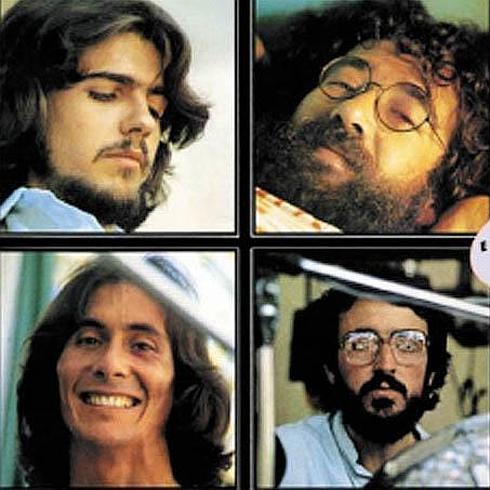
The classic Iman line-up included Manolo Rodríguez on guitar and vocals, Marcos Mantero on keyboards, Iñaki Egaña on bass (former member of funk band Barrabás) and Kiko Guerrero on drums (former member of Jerez rock pioneers Los Solos). Their first album was “Imán, Califato Independiente” (CBS, 1978), featuring a legendary 20-minute piece titled Tarantos del Califato Independiente. After this recording, Uruguayan jazz bassist Urbano Moraes replaced Iñaki. The group released its second and final studio album “Camino del águila” (CBS) in 1980.
Alameda
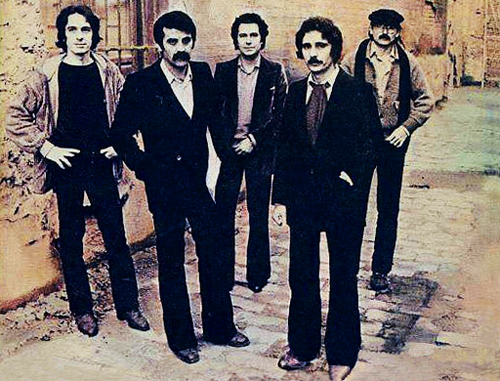
Alameda, from Seville, was another essential group, featuring two keyboardists, the Marinelli brothers. The lineup included Rafael Marinelli on keyboards, Manuel Marinelli on keyboards, Manuel Rosa on bass, José (Pepe) Roca on guitar and vocals, and Luis Moreno on percussion. Alameda’s sound was a fusion of flamenco and progressive rock.
Alameda released 4 essential albums during its first phase: Alameda (1979), Misterioso manantial (1980), Aire cálido de abril (1981), and Noche andaluza (1983). A double CD set titled Todas sus Grabaciones para Discos Epic (1979-1983) included all the band’s recordings for Epic Records.
Cai
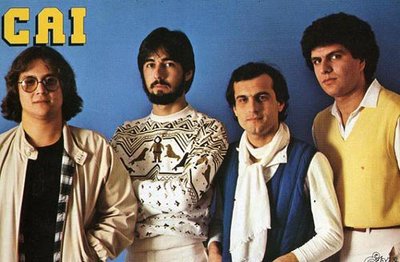
Cai, from Cadiz province, incorporated progressive rock, jazz fusion and Flamenco. Its young keyboardist, Chano Dominguez, went on to become the leading jazz pianist in Spain and is known for his brilliant fusions of Flamenco and jazz. Cai released two progressive albums, Más allá de nuestras mentes diminutas (La Cochu-Trova Records, 1978) and Noche abierta (Epic, 1980). After that the band headed in a more commercial direction with the album Canción de la primavera (Epic, 1981).
Guadalquivir
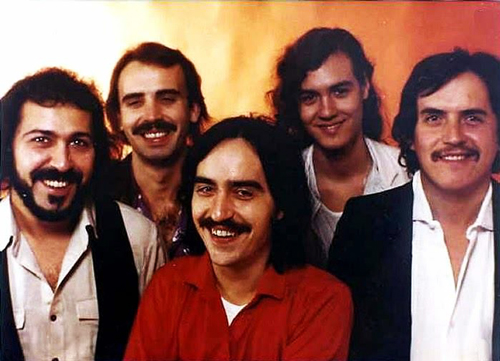
Guadalquivir were more jazz fusion oriented, creating a mix of jazz, rock and flamenco. Their first LP Guadalquivir (EMI, 1978) was also known as the disco verde (green LP) because it was manufactured with green vinyl instead of the regular black vinyl. The band was based in Madrid, led by two guitarists from Andalusia, Andres Olaegui and Luis Cobo ‘Manglis.’ The rest of the band members were Madrid-based musicians Pedro Ontiveros on saxophones and flute, Jaime Casado on bass and Larry Martin on drums.
The band’s discography included Guadalquivir (1978), Camino del Concierto (1980), Después del Silencio (1983) and the two CD set (first and second album) Guadalquivir, Todas sus Grabaciones en EMI (1999).
Miguel Ríos
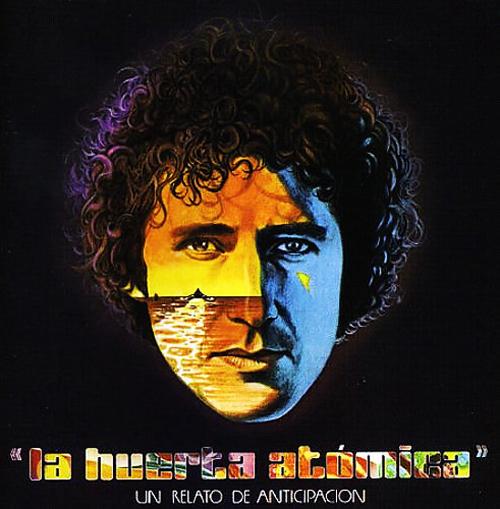
Miguel Ríos, from Granada, is one of the pioneers of rock music in Spain and most of his albums are straight ahead rock. However, during the mid 1970s, he released two superb progressive rock concept albums. The first one was La Huerta Atómica (the atomic orchard), released in 1976. The other recording was Al Andalus, dedicated to Andalusian music, fusing flamenco with progressive rock and jazz. Guadalquivir was the house band that recorded Al Andalus and toured with Miguel Rios during that period.
Vega
Vega was a Madrid-based band that performed Andalusian rock and jazz-rock, active between 1977 and 1982. It was led by guitarist Tomás Vega, from the the Extremadura region in western Spain. Vega’s first LP, titled “Andaluza” was recorded in 1977 and released in 1978. It had flamenco and Spanish classical music influences from Albéniz and Granados. The album included Enrique Carmona on flamenco guitar. The second album, “Jara” came out in 1979. The group went in a jazz-rock direction with Andalusian influences. The lineup included Jorge Silvester (alto saxophone), Fernando Bravo (flute), Luis Formés (piano), Miguel Ángel Chastang (acoustic bass), Rubem Dantas (percussion), and César Berti (percussion).
Azahar
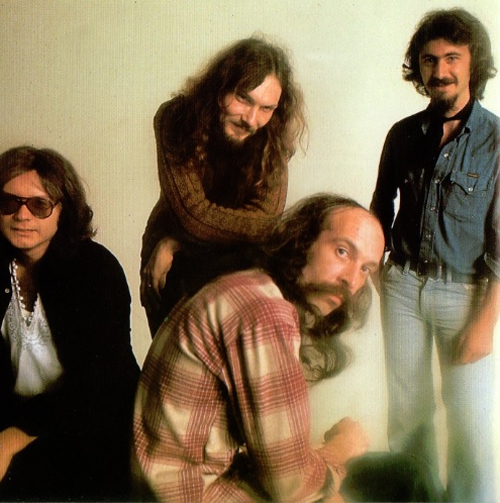
Azahar was a well-known Madrid-based progressive rock band with Andalusian influences. Azahar included musicians from South America, Spain and Egypt. They released Elixir (1977) and Azahar (1979).
Gualberto
Former Smash musician guitarist and sitarist Gualberto introduced the sitar to flamenco. Seville-based Gualberto recorded a series of albums that combined progressive rock, flamenco and Indian music influences. Early albums included A La Vida, Al Dolor (1975), Vericuetos (1976) and Otros Dias (1979).
Mezquita
Mezquita (Cordoba) attracted a lot of attention with its mix of progressive rock and flamenco airs. The group was formed by former members of a rock band called Expresión. The original lineup included José Rafa García Roso on guitars and vocals; Fernando “Randy” López Rojas on bass and vocals; Francisco López Carrillo “Roscka” on keyboards and Rafael Zorrilla “Pelucas” on drums.
The first Mezquita album was “Recuerdos de mi tierra” (Chapa Discos, 1979), which became a collector’s item and was licensed to Japan and South Korea due to high demand from progressive rock collectors. The second album, “Califas de rock” (Chapa Discos, 1981), departed from progressive rock and disappointed fans by heading in a hard rock direction.
Cuarto Menguante
Sevillian group Cuarto Menguante was formed at the end of 1978 by Paco Urizal group (vocals and guitar), Pedro Castro “Pedrito” (percussion, conga and bongos), Valentín Ponce (guitar and chorus). They were later joined by Pedro Menchen “Pilo” (bass and choruses) and Jesús Jiménez (drums). Valentin and Pedro were former members of the group Tiza y Humo, while Jesus used to play in Los Brios.
Cuarto Menguante recorded an instrumental demo that attracted the attention of the Movieplay label. The band recorded a debut mini-LP titled ‘Rompehielos’ in 1980. Half of it were well-crafted instrumental flamenco rock pieces. A year later, Cuarto Menguante released its second and final album ‘Buscando la sombrita.’
Mantra
Mantra were based in Puerto Real (Cadiz) with musicians from Puerto Real, Cádiz, Barbate and Sanlúcar de Barrameda. Band members included Juan Ahumada (guitar), José Manuel Portela (keyboards and vocals), José Antonio Ramírez (bass), Tito Alcedo (guitars) and Tato Macias (drums). An old Mantra demo was released on CD by the Asociación Cultural Arabiand Rock in 2011.
Lesser known groups include Formas, Fragua (Seville), Aljarafe (Seville), La Banda del Tio Paco (Granada) and Frontera (Jerez).
Flirting with Andalusian Rock
The 1970s was an era of innovation and experimentation. Several artists from various genres joined the Andalusian Rock movement for brief periods of time, including:
Iceberg
Barcelona band Iceberg started as a progressive rock group with vocals and later evolved towards high energy jazz-rock fusion influenced by Return to Forever and Mahavishnu Orchestra. Their album Sentiments incorporated flamenco rock elements.
The highly popular Medina Azahara (Cordoba), and Tabletom (Antequera) had less of a progressive edge, combining hard rock, blues and flamenco
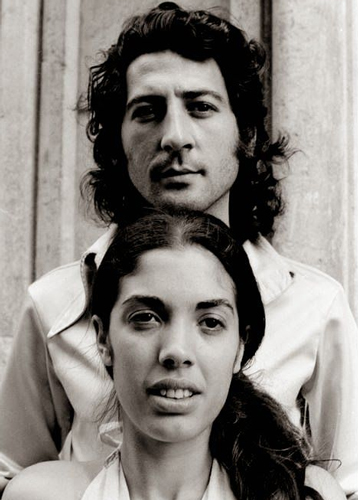
Influential singer-songwriters Lole y Manuel played an important role, combining flamenco, rock, folk and other elements. Their trailblazing album Nuevo día – El origen de una leyenda (1975) became a classic.
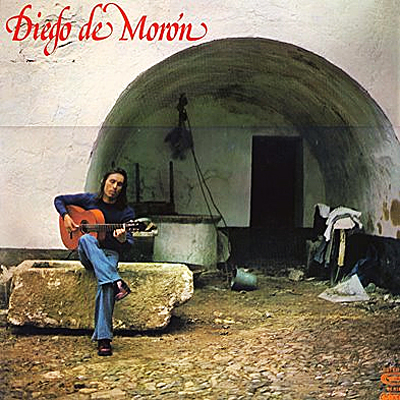
Flamenco guitarist Diego de Morón collaborated with rock musicians. Two well known bands, Triana and Madrid progressive rock act Granada, participated in Diego de Morón’s 1977 recording.
The Decline of Andalusian Rock
With the arrival of punk, new wave and various Britpop fads, record labels lost interest in progressive bands. Many of the influential Madrid and Barcelona music critics were known for their hostility towards Andalusian rock and progressive rock in general. Obsessed with music trends coming from London or New York, these gatekeepers were happy to dismiss Andalusian rock. Thus, the 1980s meant the end of the Andalusian Rock golden era.
Rebirth: New Generation Acts and Reunions
Few new Andalusian rock acts appeared after the 1980s except for Zaguán.
Zaguán started as a Triana tribute band and then evolved into an Andalusian rock band with original material. The group is led by keyboardist and singer Miguel Ángel Gómez. Zaguán released its self-titled debut album Zaguán in 2002, followed by “Testigo del tiempo” (2005).
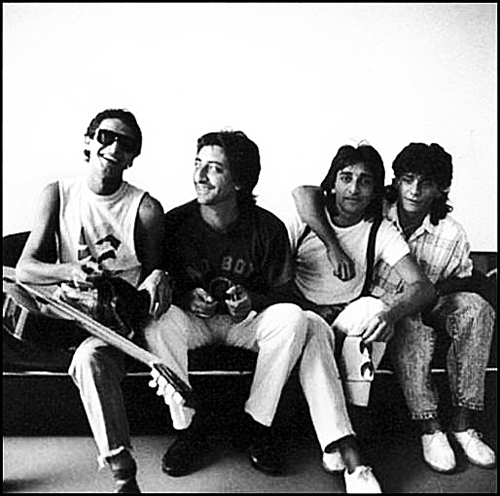
Throughout the 1980s, several bands appeared in Madrid and elsewhere, combining rock, blues, pop, world music and salsa with flamenco and other influences. These included Ketama, La Barberia del Sur.
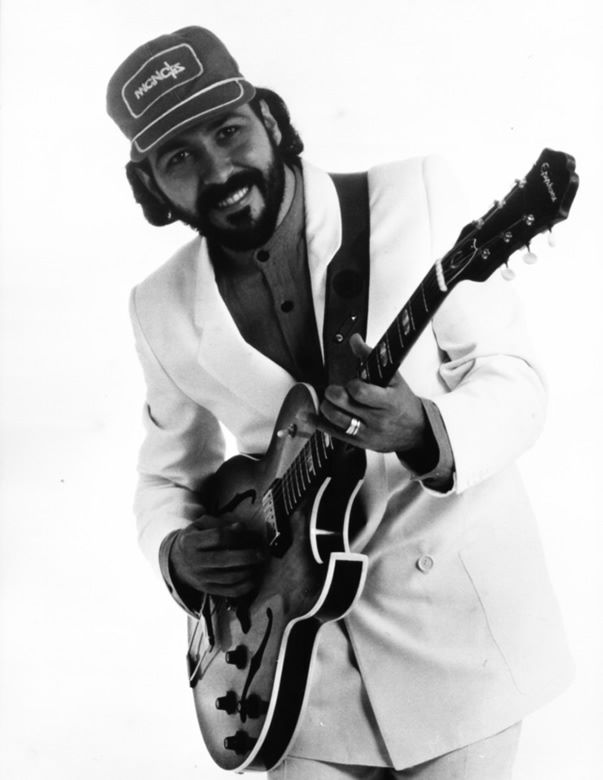
One of Guadalquivir’s guitarists, Luis Cobo “Manglis” formed Arrajatabla in 1990, together with Raimundo Amador. Arrajatabla released Sevilla Blues, a fusion of Flamenco, jazz, blues and other styles. In 1996, Manglis founded Manteca, with which he released two CDs, Pa Darte Gloria and Bailando Con Cabras. In 2002, Manglis founded the world fusion band Manglis Compas Machine featuring percussionist and tabla player Nantha Kumar. Manglis Compas Machine released the albums Mandala and My Indian Heart.
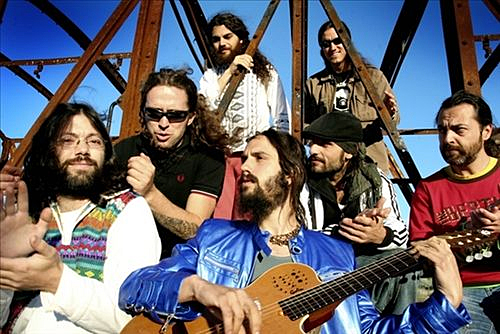
In the 2000s, a new wave of bands appeared, deeply influenced by Andalusian rock. The leading act was Madrid’s excellent band elbicho that combined progressive rock, flamenco, blues jams and more.
Other outfits included Taifa, based in Mallorca, the Spanish island in the Mediterranean. Led by vocalist and bassist Luis Massot, their sound featured Andalusian progressive rock influences. Taifa released Más allá del sur (Foque, 1999), Fe (2005), Alhambra (Discos Libres, 2008) and Despertando el silencio (Santo Grial Producciones, 2012).
Malaga band Alhandal was formed by members of a rock band called Tyr. Alhandal combined hard rock and Andalusian elements. Recordings include Raíces (2010), Rotta (2012), Retales (2014) and Donde empieza el tiempo (2016).
Arábiga (Lucena, Córdoba) included Mario J. Alcántara on guitars, chorus and programming; José Pino on keyboards and programming; Juan José Benítez on vocals; and Raúl Torrico on bass. The band’s sound leaned toward hard rock, similar to Medina Azahara. The group released two albums: Arábiga (Arabigarock, 2008) and Retazos de vida (Arabigarock, 2012).
A new Cai line up released the double album Mucho Más Allá (2007), featuring studio and live tracks. The studio album – Metáforas de Luz (El Bujío Producciones) came out in 2010.
Mezquita reformed in 2011 and released a live album, 30 Aniversario en directo ( Navarrock, 2011).
elbicho ‘s lead singer, Miguel Campello started a solo career, releasing several albums in a similar flamenco rock and fusion style as elbicho. Recordings include Chatarrero (DRO East West, 2011), Chatarrero 2 (DRO East West, 2013), Camina (Chatarrero Records, 2014), Agua, Pan, Amor y Vino (Chatarrero Records, 2016) and Entre Mil Historias (Chatarrero Records, 2018).
In 2012, Cai’s Diego Fopiani and Paco Delgado created a new band called Caeman that included Iman’s former bassist, Iñaki Egaña, and keyboardist Blas Lago. Diego Fopiani passed away in 2019.
Various music festivals between 2006 and 2012 presented reunions of various key acts: Guadalquivir, Smash, and Imán Califato Independiente.
Some of the mestizo rock (world music-leaning) bands in southern Spain such as O’funk’illo, Los Delinqüentes and Delola have Andalusian rock influences.
Heavy metal bands like Hora Zulú and Fausto Taranto also incorporated flamenco.
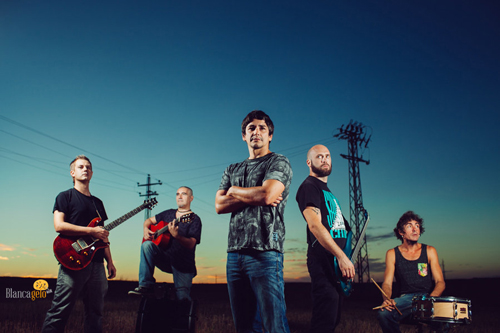
In 2017, one of the finest new groups in many years appeared in Seville. Malabriega released Fiebre, an album that brought back a mix of progressive rock and flamenco.
In 2018, Derby Motoreta’s Burrito Kachimba was formed in Seville. It is a psychedelic rock band with Triana and other Andalusian rock influences. The band released a self-titled CD. Band members include Dandy Piranha on vocals; Bacca on guitar; Gringo on guitar; Papi Pachuli on drums; Soni on bass; and Von Máscara on keyboards.

Last album by Mohama Saz is good shit:
https://open.spotify.com/album/0H8Pir3eXe6jMXSb5Kj1Nl?si=HplwmTQzSOuX3tUPw2VpRA